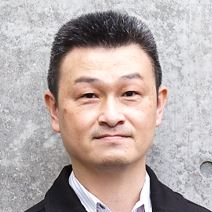Advances in Functional Cement and Concrete Materials
A special issue of Materials (ISSN 1996-1944). This special issue belongs to the section "Construction and Building Materials".
Deadline for manuscript submissions: closed (20 August 2023) | Viewed by 1656
Special Issue Editor
Special Issue Information
Dear Colleagues,
Concrete and cementitious materials are common construction materials that are widely used all over the world. On the other hand, research and development activities of concrete as innovative functional materials have been actively conducted in recent years. For example, self-healing concrete is one of the most important topics in the field. Digital fabrication technologies for concrete, such as 3D printing, are another example. Other noteworthy research projects include fiber-reinforced concrete, concrete with sensing functions, concrete with thermal insulation and thermal storage functions, concrete for carbon storage, and so on. To realize novel functional concrete, it is not only necessary to achieve the mixing of new admixtures but also to apply nanotechnology and additional devices. These new concrete materials have great potential for sustainable development.
In this Special Issue, we would like to highlight and discuss functional construction materials and their new possibilities.
Dr. Tomoya Nishiwaki
Guest Editor
Manuscript Submission Information
Manuscripts should be submitted online at www.mdpi.com by registering and logging in to this website. Once you are registered, click here to go to the submission form. Manuscripts can be submitted until the deadline. All submissions that pass pre-check are peer-reviewed. Accepted papers will be published continuously in the journal (as soon as accepted) and will be listed together on the special issue website. Research articles, review articles as well as short communications are invited. For planned papers, a title and short abstract (about 100 words) can be sent to the Editorial Office for announcement on this website.
Submitted manuscripts should not have been published previously, nor be under consideration for publication elsewhere (except conference proceedings papers). All manuscripts are thoroughly refereed through a single-blind peer-review process. A guide for authors and other relevant information for submission of manuscripts is available on the Instructions for Authors page. Materials is an international peer-reviewed open access semimonthly journal published by MDPI.
Please visit the Instructions for Authors page before submitting a manuscript. The Article Processing Charge (APC) for publication in this open access journal is 2600 CHF (Swiss Francs). Submitted papers should be well formatted and use good English. Authors may use MDPI's English editing service prior to publication or during author revisions.
Keywords
- functional concrete
- self-healing concrete
- 3D concrete printing (3DCP)
- fiber-reinforced concrete
- high-performance concrete
- self-sensing concrete
- smart concrete structure
- carbon capture and storage
- nanotechnology






